Nature thrives when communities thrive. At LGT Venture Philanthropy, we believe that local communities hold the knowledge to successfully protect the ecosystems they live in and are also best placed to manage them sustainably. As a result, our environment strategy is centered on supporting scalable, community-based efforts to protect and regenerate ecosystems through community conservation models that provide sustainable livelihoods for millions of people.
This article showcases how we are implementing our environment strategy in East Africa. It tells the story of how our strategic partnerships with key organizations were formed and highlights how these partnerships are making a positive impact on ecosystems and livelihoods.
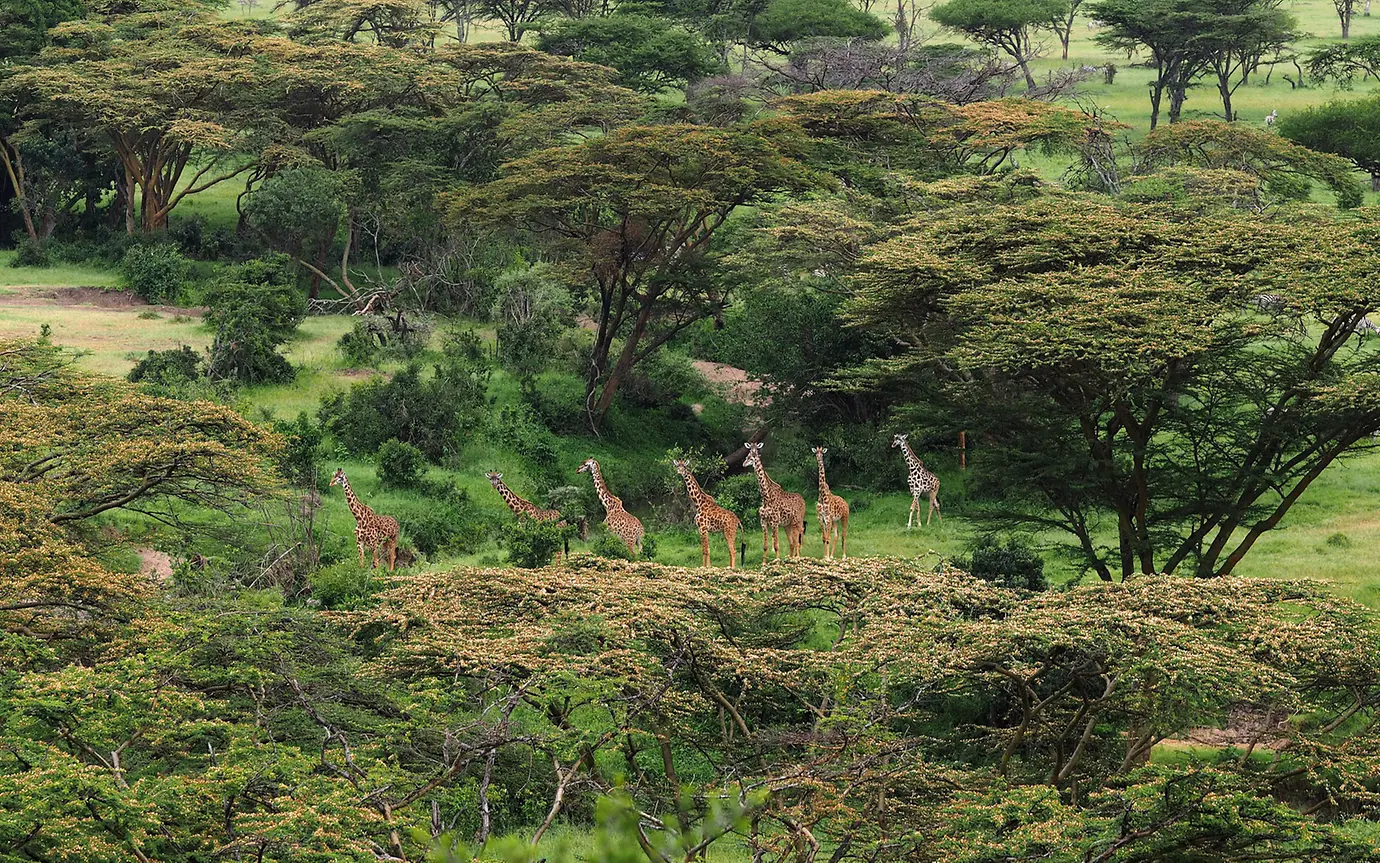
The sprawling savannah plains of the greater Maasai Mara and Serengeti ecosystems constitute one of the earth’s brightest biodiversity hotspots. This area alone is home to forty percent of Africa’s larger mammals. It is also home to the Maasai people, an indigenous population with profound respect for the nature and wildlife they share a home with. Over the past decades however, climate and demographic changes have disrupted the delicate balance that nature and humans have traditionally enjoyed and put the biodiversity of this ecological oasis in peril.
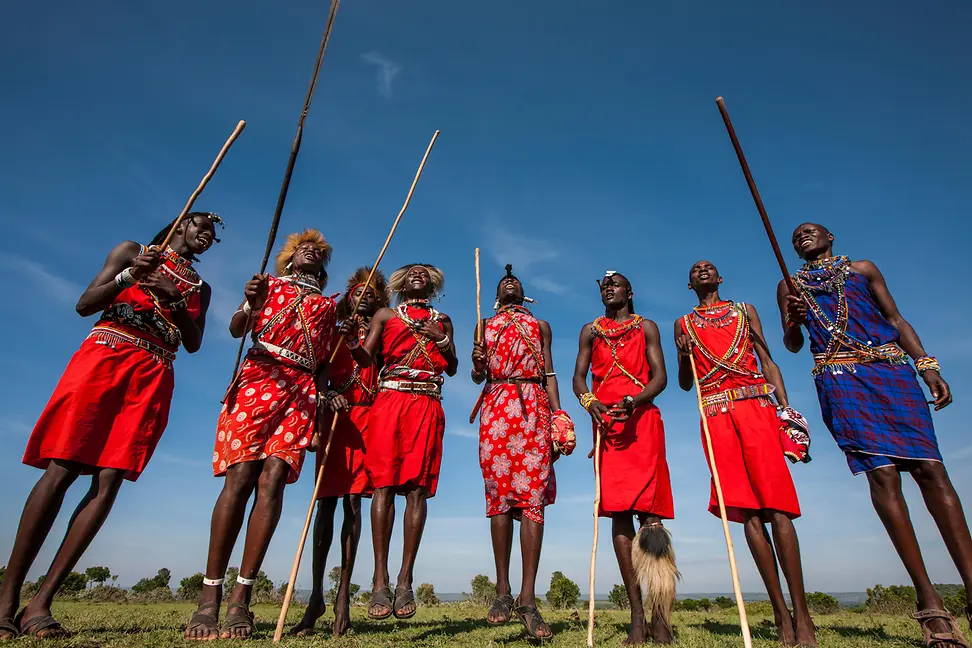
More frequent droughts have reduced the availability of water and pasture for the pastoralist Maasai people and their livestock. This, coupled with a staggering population growth rate of about 8% annually in the Mara has put pressure on limited land and water, forcing people and their livestock deeper into areas inhabited by wildlife. This increased proximity to wildlife occasionally results in livestock being attacked by lions and other predators, often spurring retaliatory attacks on wildlife. To protect their communities and livestock from attacks, Maasai communities often erect fences to keep wildlife out. These fences, which also serve the purpose of demarcating the boundaries of Maasai landowner’s plots, block traditional migration corridors for wildlife, leaving animals with no means to relocate to new areas as they search for food and calving grounds. This has contributed to dwindling wildlife numbers in these areas, with wildlife numbers declining by as much as 68% in the past four decades in Kenya alone.
Faced with the ecological degradation of their land and the loss of their livestock, Maasai livelihoods have become increasingly vulnerable, exacerbating an already precarious situation.
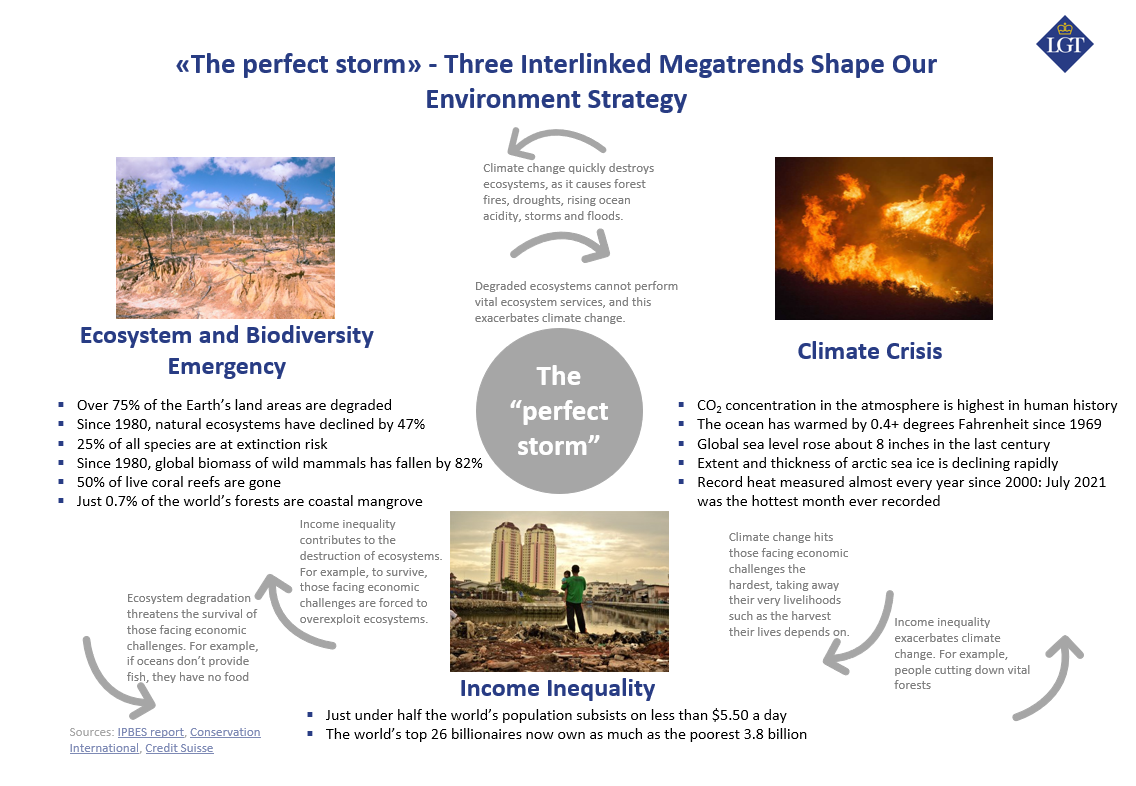
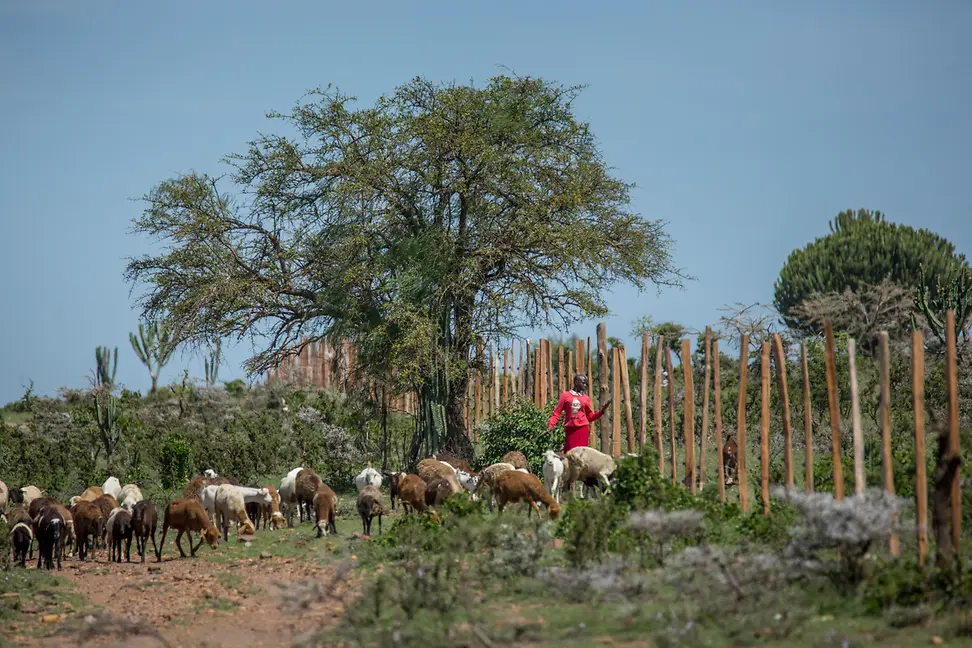
We set out to partner with organizations addressing these interrelated challenges affecting communities and wildlife. One such organization was Basecamp Explorer Kenya (BCEK)- a responsible tourism company that has operated in Kenya since 1998 (In 2021, Basecamp Explorer Kenya merged with Saruni Lodges and Camps and is now Saruni Basecamp). Since its inception, BCEK and its non-profit foundation, Basecamp Explorer Foundation (BCEF), have implemented community-led projects that protect lands and wildlife while simultaneously creating livelihoods opportunities for communities.
In 2016, we led a consortium of likeminded funding partners including Summa Foundation and Baggins AG to make an equity investment in Basecamp Explorer. Between 2016 and 2022, additionally this consortium disbursed approximately USD 4.4m in grants to BCEF to fund its ecosystem restoration and livelihoods activities across the Mara.
Our support to BCEF has contributed to the success of several initiatives including the Basecamp Maasai Brand (BMB)- a community-based handicraft workshop for Maasai women that provides a source of income to 150 women, as well as a waste management and cleanup system that helped improve the sanitation and waste disposal standards for thousands of people in the Masai Mara region. BCEF has also planted over 178,000 trees to protect the soil from erosion while providing shade and a food source for animals. These trees now serve as a home to over 300 identified bird species and small wildlife. This tree planting complements other protection and regeneration efforts which include drought mitigation and grassland restoration activities.
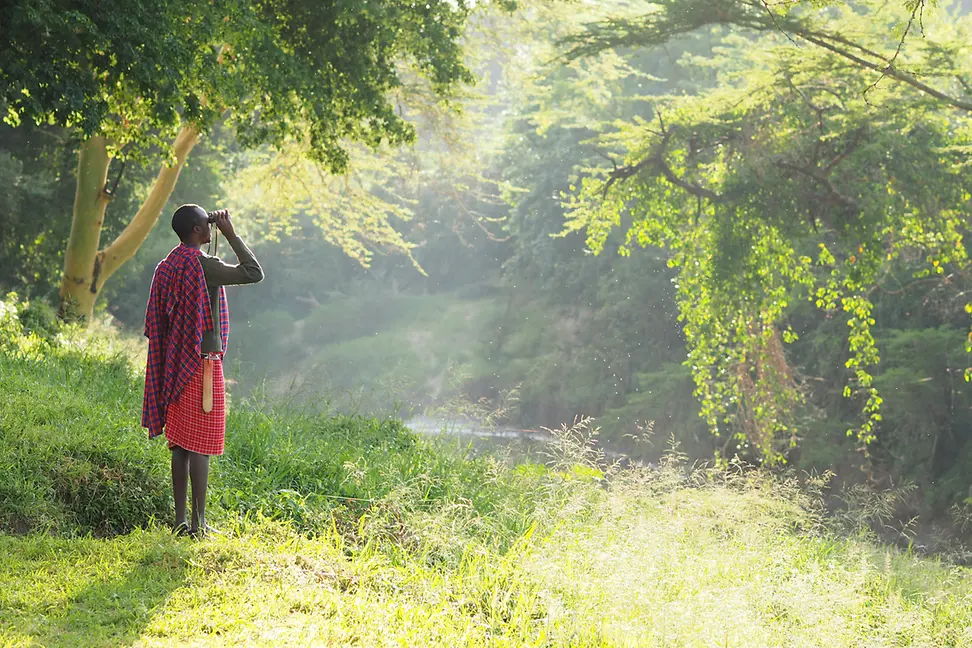
Arguably one of BCEF’s most notable interventions in the Mara has been their support towards the creation of community-based conservancies, particularly the Mara Naboisho conservancy and the Pardamat Conservation Area.
A conservancy is an innovative, community-led approach to protecting ecosystems while providing local communities with a sustainable source of income. The way conservancies work in the Maasai Mara is by Maasai landowners agreeing to collectively lease their individual plots of land to form a conservancy. The leases typically last for periods of up to 15 to 30 years. Governed by a board including representatives of the community, conservancies use the leased land to implement a range of activities to protect and regenerate ecosystems, such as removing the fencing around landowner’s plots to re-open wildlife corridors. Conservancies typically allocate a limited amount of ‘bed nights’ to responsible tourism lodges and camps, allowing them to operate within their area. For this right, these responsible tourism operators agree to pay a lease fee per bed to the conservancy, providing the conservancy with the funds it uses to pay a rent to each of the Maasai landowners that contributed their land. This rent augments the income of Maasai landowners, improving their livelihoods.
Almost 600 Maasai landowners came together and agreed to lease a total of over 49,000 acres of land to form the Mara Naboisho conservancy. The conservancy has been a success. Between 2014-2017, a 72% increase in the number of elephants was noted within the conservancy. And not only are Maasai households benefitting from conservancy rents, but in addition, 95% of the workforce for the tourism operators in this conservancy are local Maasai.
BCEF also facilitated the development of the Pardamat Conservation Area (PCA), Africa’s first mixed-use conservancy. Mixed-use conservancies aim to balance conservation goals with sustainable human and livestock use. As a result, in the PCA, the 850 Maasai landowners who contributed their land, remain living and working within the conservancy with their livestock. This area represents a crucial wildlife corridor, and so one of the main activities of the conservancy was the removal of the fences that blocked wildlife corridors. Fences were replaced with ‘bomas,’ - traditional, circular enclosures in which herders could keep their livestock overnight, thereby keeping livestock safe without blocking corridors. These activities in the PCA have been successful and the wildlife population of the area has noticeably increased.
The PCA is also the location the Wildlife Tourism College (WTC). The WTC was created by BCEF and its partners to be a vocational education, research, and community-capacity building hub within the region. In May 2023, it opened its doors to its first cohort of 40 students (40% of whom are female), offering certificates in Safari guiding as well as degrees in Hospitality Management and Environmental Technologies. Its profit-sharing model will support college operation expenses, scholarships for local Maasai students, and the expansion and sustainability of the PCA.
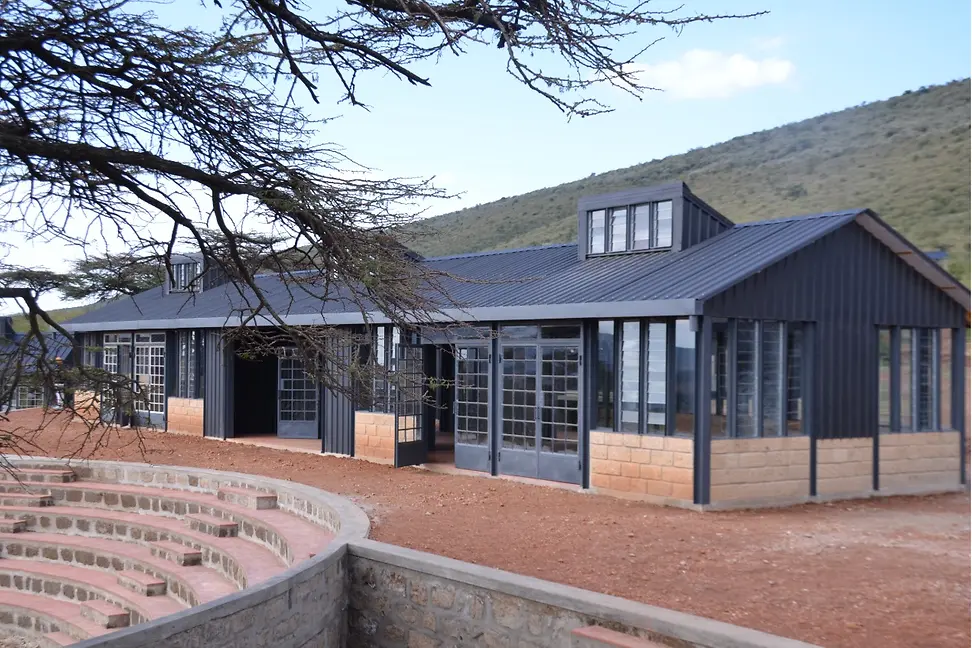
Although conservancies like the Mara Naboisho conservancy were producing impressive results for communities and wildlife, each conservancy was individually managed and set up without any mechanisms to coordinate and share best practices. This led to inefficiencies that hampered the growth of new conservancies. Eventually it became apparent that so much more could be accomplished for both wildlife and communities if a coordination body existed to represent all conservancies across the Maasai Mara.
It was with this goal that the Maasai Mara Wildlife Conservancies Association (MMWCA) was established in 2014. The MMWCA is an umbrella association of 22 conservancies in the Greater Mara ecosystem, covering 453,000 acres of protected land. It has the important task of scaling the conservancy model across the Greater Mara Ecosystem by supporting local communities to set up new conservancies. It also seeks to introduce diversified revenue streams that improve the financial stability of conservancies and provides a platform for conservancy stakeholders to coordinate actions and advocate for policies at a county level.
Convinced of the importance of this key association, in 2020 and 2021, after consulting their five-year strategic plan, we provided the MMWCA with core funding amounting to just over USD 1 million to cover gaps identified in their monitoring and evaluation, communications, and capacity building. Due in part to our support, the MMWCA facilitated the establishment of several new conservancies. In the years of our partnership, the MMWCA grew from representing 16 conservancies in 2020 to representing 22 conservancies in 2023.
Building on the successful and ongoing partnership with the MMWCA, we decided to extend our support to conservancy management and coordination to the national level. In 2021, we began a partnership with the Kenya Wildlife Conservancies Association (KWCA). The KWCA represents 174 conservancies all across Kenya, covering nearly 20 million acres of protected land. It advocates for conservation policies at the national and sub-national level and ensures that the interests, needs and concerns of conservancies are heard by key decision makers. After analyzing the KWCA’s five-year strategy, over 2021 and 2022, we provided them with core funding totaling USD 1.7 million to help them execute and accelerate their work.
While conservancies were making a positive impact on livelihoods and ecosystems, the fact that the financial models of most of these conservancies were linked to tourism posed a major problem. In 2020, lockdowns and travel restrictions due to the Covid-19 pandemic caused an unprecedented halt in tourism. Without tourists, the lodges and camps in the conservancies could not pay the lease fees to the conservancies which meant that conservancies were unable to implement their projects and pay out rents to landowners.
Noting that the precarious gains to wildlife protection and regeneration could be lost if nothing was done, in 2020, we joined a group of donors including USAID and the Band Foundation to contribute to an emergency fund to support conservancy operations in the Mara. Named the ‘Opex Fund’, this fund of USD 1.6m and was used to sustain the operations of 13 conservancies between July 2020 and July 2021. Tourism levels picked up in 2022 but were still relatively low compared to previous years. As a result, in 2022 we contributed another USD 150,000 to a second round of Opex emergency funding that totaled USD 700,000. This crucial influx of funding ensured the survival of these conservancies through a very tough period.
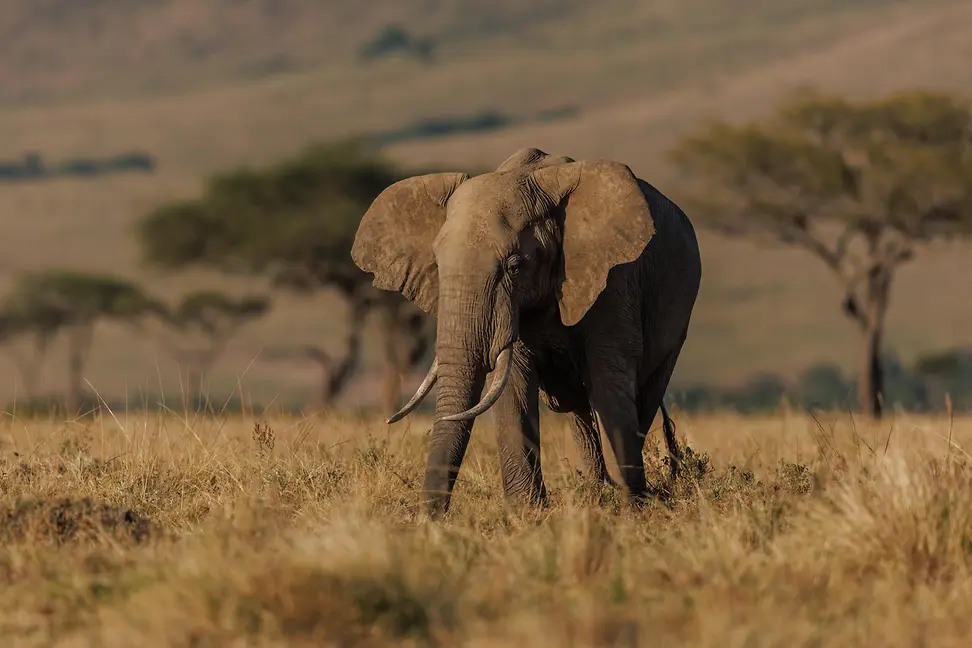
As important as these emergency contributions were, it was apparent that communities and conservancies needed to have alternative sources of income in order to weather future downturns in tourism. As a result, we encouraged the MMWCA to consider looking into the generation and sale of carbon credits as a source of alternative income for communities. We were already familiar with the potential of such an endeavor, having funded a 2019 assessment study conducted by CommonLand which revealed the potential of carbon projects in the Mara.
The savannah grasslands of the Maasai Mara are invaluable in the fight against climate change because healthy grasslands serve as carbon sinks, absorbing significant amounts of carbon from the atmosphere. While the natural grazing patterns of wildlife don’t typically affect grassland health, large numbers of livestock can quickly graze vast portions of grasslands to depletion. As frequent droughts have led to a reduction in the availability of grazing lands, and population growth has seen an increase in the number of livestock owned by herders, overgrazing of limited grass has become a threat to the health of grasslands in the Mara.
By pursuing sustainable grassland management efforts such as promoting rotational grazing in the conservancies, the MMWCA could ensure that optimal amounts of carbon are sequestered from the atmosphere and generate carbon credits in the process. The MMWCA could then sell these credits to the voluntary carbon market where they could be purchased by individuals and companies looking to offset their carbon footprint.
With this in mind, we linked the MMWCA with two organizations involved in the carbon credit space. The first organization was Conservation International, an international non-profit environmental organization that helped facilitate a successful project to sell and generate carbon credits in Kenya’s Chyulu Hills. The second organization was Ahueni AG- a non-profit company established by LGT Venture Philanthropy, Summa Equity, Baggins AG, MV Capital AG and Weitblick GMBH, engaging capital to develop and finance carbon offset projects responsibly, and in ways that prioritize local communities. Ahueni was specifically established with the purpose of developing this carbon project in the Mara.
In partnership, Conservation International and Ahueni were able to provide the MMWCA with the technical expertise to initiate a carbon offset project, as well as the networks to broker the sale of any generated carbon credits in the voluntary carbon market in the future.
This is how the One Mara Carbon Project was born. Led by the MMWCA, the One Mara Carbon Project is an initiative to protect and regenerate the grasslands of the Maasai Mara, thereby generating carbon credits that benefit local communities. The rights to these carbon credits belong to the MMWCA, and therefore money from their sale is redistributed by the MMWCA to the communities they represent. This additional source of income helps secure livelihoods for communities and provides increased sustainability for conservancy operations.
In 2021 we provided Ahueni with a three-year grant of USD 150,000 to support their work with the MMWCA on the One Mara Carbon Project.
One of the key features of our approach to venture philanthropy is that our support to the organizations we partner with is not limited to financial support. It is for this reason that in addition to the core funding that we provided to BCEF, the MMWCA, the KWCA and Ahueni, we also strengthened the organizational capacity of these organizations through the LGT Impact Fellowship Program. This fellowship program recruits talented professionals in various fields and embeds them as staff within our portfolio organizations for a one-year period during which they share their expertise and raise the capacity of local teams. Between 2017 and 2022, we facilitated the placement of a total of 13 fellows across these four organizations. These fellows specialized in various fields such as project management, marketing, fundraising, finance, and impact measurement.
With these partnerships already in place, and with the crucial lessons we have learned through our engagements in Kenya, we are in the process of an ambitious attempt to scale the impact we have achieved in Kenya, across East Africa. This will take place through a new partnership that we intend to announce in a short time.
Fully committed to COP15’s 30x30 target, which aims to ensure that 30% of the world’s lands and oceans are protected by 2030, we believe that our current and future engagements can contribute to making this ambitious goal possible.
For any inquiries about this article, please contact Nava Anvari, Investment Manager and Africa Lead for LGT Venture Philanthropy- nava.anvari@lgtvp.com